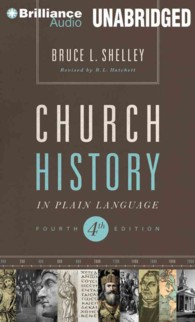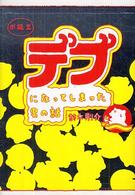- ホーム
- > 洋書
- > 英文書
- > Architecture
Full Description
Eric Arthur (1898-1982) was a transformative figure in Canadian architecture. His many contributions extended across design, teaching, preservation, urban planning, criticism, and architectural history. This book explores his extensive influence and his legacy in shaping the creations, the profession, and the public awareness of architecture.
Art history and architecture professor Harold Kalman examines how Arthur spent his long career at the University of Toronto, where he taught and motivated countless aspiring architects, many of whom went on to become leaders in the field. As the long-time editor of the Journal of the Royal Architectural Institute of Canada, he guided architectural discourse and taste with his critiques, articles, and editorials. His popular book, Toronto: No Mean City (1964; 3rd ed., ed. by S.A. Otto, 1986) brought architectural history to the wider public and cemented his central role as a commentator on the city's urban environment.
A charismatic leader for preservation advocacy and a founding member of the Architectural Conservancy of Ontario, Arthur increased public appreciation for old buildings. His efforts are showcased at the restored St. Lawrence Hall. Arthur was equally influential as a champion for the modern movement. He attracted outstanding modern architecture to his city, most notably in his central role in creating the internationally admired Toronto City Hall.
The book honours a Canadian cultural icon, demonstrating how Arthur extended his work beyond theory and into practice, through a lifelong dedication to architecture and urban planning - leaving a lasting legacy in heritage conservation.
Contents
Preface
Introduction
1. Between Arts and Crafts and Beaux-Arts Classicism
1.1 Apprenticeship in New Zealand
1.2 Education in England
2. Educator to Two Generations
2.1 Educator, Author, Torontonian
2.2 Architectural Critic
3. Champion of Georgian
3.1 Documenting the Past
3.2 Reviving Georgian Classicism
4. The Business of Architecture
4.1 Competitions
4.2 Partnerships
5. Adopting Modernism
5.1 1936: A Year of Transformation
6. The Modern Movement
6.1 Modernism in Architecture
6.2 Ventures into Modernism
6.3 Canadian Reactions
7. Consolidating Modernism
7.1 Contributions by Fleury and Arthur
7.2 Dissemination
7.3 Toronto City Hall and Its Legacy
8. Urban Planning
8.1 The Department of Civic Design
8.2 New Directions in Planning
8.3 Planning for Toronto
9. Conserving the Past
9.1 The Architectural Conservancy of Ontario
9.2 Preserving Toronto's Architectural Legacy
Conclusion: Innovator or Bellwether?
Appendix 1: Eric Arthur's Architectural Partnerships
Appendix 2: Buildings and Projects
Appendix 3: W.E. Fleury Job Index
Interviews
Bibliography








